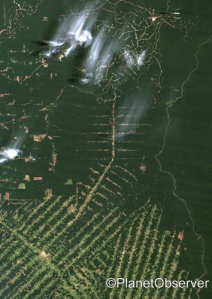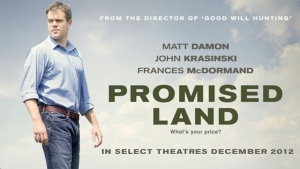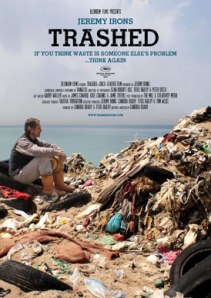Princeton Cicadas: A Radio Report
May 7, 2013 § Leave a comment
The news is abuzz these days about the arrival of the cicadas along the east coast; billions of them are expected to pop up from North Carolina to the Hudson Valley and into Connecticut as well. For one of my classes, I produced a radio piece about this oncoming brood and whether they’d be coming to Princeton specifically. It turns out, no, they’re not coming too intensely to the area this year, but there is a lot of cool history with the bugs and the school. Listen to find out!
Global Forest Watch 2.0
April 18, 2013 § Leave a comment
Just recently, a new forest monitoring technology, called Global Forest Watch 2.0, was introduced at the UN Forum on Forests. The advent of this new tool will hopefully have a large influence on illegal deforestation that occurs in forests across the world.
 Forests are important to us for so many reasons. They are places we can observe and enjoy, they provide us with a beautiful and natural landscape, and they’re home to many complex ecosystems and species. Furthermore, from a climate change perspective, the forests are a vital carbon sink, absorbing large amounts of the gases we emit into the atmosphere (oceans and forests absorb almost half of human emissions). Plus, 17 percent of human emissions of greenhouse gases come from deforestation itself, yet another reason why intact forests are vital to the health of the planet. Local communities also rely on forests, depending on its resources for sustenance as well as livelihood (selling fruits, plants, etc.).
Forests are important to us for so many reasons. They are places we can observe and enjoy, they provide us with a beautiful and natural landscape, and they’re home to many complex ecosystems and species. Furthermore, from a climate change perspective, the forests are a vital carbon sink, absorbing large amounts of the gases we emit into the atmosphere (oceans and forests absorb almost half of human emissions). Plus, 17 percent of human emissions of greenhouse gases come from deforestation itself, yet another reason why intact forests are vital to the health of the planet. Local communities also rely on forests, depending on its resources for sustenance as well as livelihood (selling fruits, plants, etc.).
The problem with forests, however, is that they’re also extremely valuable as lumber and timber. Even with local and large scale government attempts to protect the forests, illegal logging is still widespread, especially in the Amazon, the Congo basin and Southeast Asia where there are big swaths of unmonitored forest. In fact, 50-90% of the logging that occurs in these areas is illegal, demonstrating the gravity and intensity of this problem, especially considering how densely and diversely populated the forests are with plant and animal species that rely on the forest being intact.
The main problem over the years hasn’t been that we’re not aware of this illegal activity, it’s rather that it can be hard to spot in time to stop it. Mapping the forests can take years, and by the time a fresh map displays signs of illegal logging, those people have already moved off and won’t be there by the time anyone gets to the site. And so, this billion dollar trade industry has established itself and managed to evade those who seek to protect the forests and keep them intact.
That’s what makes the arrival of the Global Forest Watch 2.0 so exciting: it offers a new, easier, and faster way to track the forests and catch illegal activity while it’s happening. The new technology combines various elements, such as satellite, mobile phone tracking, improved maps, internet access and community engagement to create an effective system. In this day and age, where some countries have better access to internet and mobile service than to freshwater, the GFW 2.0 is using that to its advantage, allowing people in the field to contribute to the monitoring system. For example, they can send in a picture and mapped location from their mobile phones at the site of illegal activity, creating a more live-stream mapping effect with constant live updates.
GFW 2.0 was engineered by Google Earth and Earth Builder, after World Resources Institute came up with the idea (with assistance and encouragement of the UN Environmental Programme). The technology will allow governments and local communities to work together to enforce stricter regulation over the forests and catch illegal activity more efficiently. Furthermore, it will provide the maps with up-to-date and accurate information, which will subsequently mean that taking action to prevent the destruction of the forests will be founded on sound reasoning and scientific evidence that the problem actually exists and needs to be addressed.
This technology will help many countries with diverse and bountiful forests, not just developing countries. In fact, developed countries often have just as hard a time monitoring the forests. The technology to monitor is expensive and time intensive, and often, it seems that more effort goes into monitoring and identifying the problem rather than taking solid action to address it. There are already some success stories, however, such as Brazil.

Brazil has been extremely successful in stopping illegal deforestation in its forests over the last couple decades. Photo credit: Flickr, Creative Commons, PlanetObserver
Since implementing new monitoring technologies in 2004, Brazil has curbed its illegal deforestation activity by 80%! This shows a remarkable improvement and one that other countries (both developed and developing) can hope for in the near future with the help of GFW 2.0.
For more information, you can go to the World Resources Institute page describing it.
The New York Times’ Decision to Cut the Environmental Desk
January 20, 2013 § Leave a comment
Just a couple weeks ago, the New York Times quietly announced that it was closing its environmental desk, which opened in 2009. Reactions to the news have ranged from outrage on behalf of those who argue this is the most imperative time to be reporting on environmental issues (what with 2012 setting huge records in heat, storms, etc.), but there are also those who understand that the change is largely motivated by a need to cut costs. However in an editorial for the Huffington Post, Al Gore made the valid point that the New York Times’ “role in informing U.S. policy debates is unique.” Gore’s concern that the New York Times, as one of the most widely read news publications in the country, can’t afford to stop reporting on these issues is one I tend to agree with.
That being said, the New York Times insists it will not cut coverage of environmental issues. The reporters who had been hired at the environmental desk will be relocated within the office. But now that there’s no specific call for these stories, will they still be covered as frequently and rigorously?
Some argue that this could be a beneficial change; that in fact, by integrating the environmental news pieces into more general stories on economics, politics and the like, readership of this coverage might actually rise. But we can’t know for sure, and although it might be a bit dramatic to interpret this move as a symbolic disregard for environmental issues, I can’t help but feel it’s a slight shrug in that direction.
I’ll be sad if their Green Blog disappears, as I always enjoyed those smaller stories that weren’t headliners but informative nonetheless. However I trust the New York Times to recognize the importance of these stories and not let them slip through the cracks. Time will tell.
A Whale of a Tale in Queens
January 3, 2013 § Leave a comment
This past semester, I had the pleasure of taking a course on Herman Melville’s novel Moby Dick. The entire class revolved around that one book, and as I slowly read the chapters and took in all the beautiful images conjured by Melville’s prose, I grew to fall in love with whales. They’re majestical creatures–graceful, powerful, beautiful, and unfortunately vulnerable to our harm. Of course, Moby himself was more of an unconquerable force who somehow managed to escape the pursuits of various ships over the years, but many other whales in the story fell prey to the chase.
But this story is not about the horrors of the whaling industry. Rather, it’s about one whale in particular, who was found beached near Queens, NY, in the neighborhood of Breezy Point, which suffered widespread damage from Hurricane Sandy not too long ago. About a week ago, a whale was found on the shores of the beach, still fighting for life despite being largely out of water.
Biologists who came to the scene identified the animal as a Finback Whale. Finbacks are second in size to the Blue Whale and an endangered species. Of the Fin-Back, Melville romantically writes, “his great lips present a cable-like aspect, formed by the intertwisting, slanting folds of large wrinkles. His grand distinguishing feature, the fin, from which he derives his name, is often a conspicuous object….The Fin-Back is not gregarious….Very shy; always going solitary; unexpectedly rising to the surface in the remotest and most sullen waters; his straight and single lofty jet rising like a tall misanthropic spear upon a barren plain; gifted with such wondrous power and velocity in swimming, as to defy all present pursuit of man; this leviathan seems the banished and unconquerable Cain of his race.”
And yet this beautiful 60-foot animal was not unconquerable. Firemen called to the scene used a fire hose to pour water over the whale’s body in an effort to hydrate the animal. Apparently the whale opened its eyes and moved its tail in response to the water, but could muster no more strength. The whale died a day after being found.
Although the necropsy has not been conducted yet, the whale’s emaciated figure suggested that the animal had been suffering from starvation for some time. Biologists stated that the animal would have had to be euthanized because of its helpless condition anyway.
Plans are to bury the whale by the sand dunes on the same beach where it was found.
I tell this story not to mention death at the beginning of a new year, but rather to look back on the events of 2012 and remember that we as a world are one, indelibly connected. We all share this planet; we experience loss, life, happiness and tragedy the world over. And the earth belongs to everyone and everything. So whatever the reasons were for this whale’s death, let’s be mindful that we can all work to make this earth a better, cleaner, healthier place. Let’s all seek to help each other in the new year and improve our cooperation and our understanding. Just because the cycle of life is something we can’t alter, it doesn’t mean that life itself is not capable of being improved and brightened. Here’s to a new year.
HAPPY (ECO) HOLIDAYS!
December 7, 2012 § Leave a comment
The holiday season is upon us (despite it being a 65 degree day here in New Jersey…), and people the world over are making wish-lists, shopping for loved ones, and gearing up for a week or two at home with the family. While I could do the generic thing and write a post about eco-friendly gifts or green ways to wrap your presents, I’m going to do something slightly different. I’m going to talk about the man, the legend himself: Santa.
That’s right. I’m going to talk about Santa Claus. I came across this fun infographic from Ethical Ocean a few days ago, which predicts what Santa’s carbon footprint would be if he were really to deliver presents to all the children across the globe. I like how in-depth they go, even calculating the footprint of the milk & cookies left out by hopeful little children!
While this might seem like an insubstantial and joking post, there is actually a point. And the point, I’m afraid, is generic. We can be eco-friendly even during an indulgent and often excessive holiday season! No need to dampen the mood, but just make the right choices and you’ll be giving the planet a gift as well! As the infographic tells you, use recycled wrapping paper, buy toys and other products that are made from recycled materials. And buy local milk and cookies! For those of you who want to delight in Christmas cheer while simultaneously retaining an environmentally-oriented mindset, these are good goals to keep in mind.
That’s it for now–Happy Holidays!
More on Movies…
December 3, 2012 § Leave a comment
As chance would have it, a week after I argued the need for environmentally-themed mainstream movies, I saw a preview for Gus Van Sant’s upcoming “Promised Land.” The movie tells the story of a gas company rep who arrives in a rural town looking to drill for natural resources, to the distress of local residents. The cast is headed by Matt Damon and John Krasinski (who co-wrote the screenplay), along with other notables such as Frances McDormand and Hal Holbrook. The all-star cast and the environmental message it carries have the potential to make a dent in the national debate about fracking, which is what this movie centers on. Not surprisingly, there have already been various reactions to the announcement of the film, from those who hail it as serving an important purpose to those who denounce it for its biased and inaccurate portrayal of the fracking industry. So, the question is: will this film be good or bad for the anti-fracking fight?
Not surprisingly, there have already been various reactions to the announcement of the film, from those who hail it as serving an important purpose to those who denounce it for its biased and inaccurate portrayal of the fracking industry. So, the question is: will this film be good or bad for the anti-fracking fight?
For those who don’t know, fracking is short for hydraulic fracturing, a method of extracting natural gas from shale rock that would otherwise be too hard to access. The process is controversial because it requires pumping sand, millions of gallons of water and chemicals into the wells at high pressure. And, currently, companies drilling for natural gas are not required to disclose the chemicals used during fracking. The reason this is of concern is that scientists have found that dangerous and carcinogenic compounds are used during the process and could contaminate drinking water. Additionally, the process emits harmful pollutants to the air, methane included, which is the meanest greenhouse gas out there (more than CO2, believe it or not).
“Promised Land” isn’t the first movie to focus on the issue of fracking, although perhaps it’s the first non-documentary. In 2010, a documentary titled “GasLand” by Josh Fox was released, which exposed the dangers fracking poses on the health of communities located near drilling sites. In response to this provocative film, some people sought a reaction, a retort: a pro-fracking film project on Kickstarter became the most popular project in its category. Within three weeks, funding for the project (the movie will be titled “FrackNation”) had reached the desired goal of $150,000. The film is meant to serve as a direct response to “GasLand” and will argue that there is negligible evidence to suggest that fracking has a negative impact on citizens’ health. “FrackNation” was supposed to be completed this past summer, however I haven’t heard any news of its imminent release.
Those in support of fracking argue that this process would allow us to extract enough oil and gas to provide the United States with energy for over a century, also helping America alleviate its dependence on foreign oil. Supporters insist that the health of citizens living near drilling sites would not be compromised. And thus they denounce the upcoming “Promised Land” as a modern-day horror story that is largely fictionalized and designated to scare citizens into opposing fracking efforts in the country. Opponents of the movie draw attention to the fact that a big funder for the film was a UAE royal family, who would therefore have a vested interest in keeping America dependent on foreign oil…
Clearly the debate on fracking, like most other environmental topics, is far from coming to a consensus. I’ve done a little research and ultimately share the worry of environmentalists and scientists alike, although that could be attributed to the fact that I’m an ardent environmentalist. For an interesting and informative infographic on fracking, check out this one, created by the GasLand filmmaker (and yes, I understand it could be biased).
But whether we believe those who denounce the film as bogus or those who champion it as important and relevant, we still have to wonder whether this film will do any good or bad for the fracking industry. I’m sure some people will go to see this movie simply because Matt Damon is in it, and then walk out feeling terrified. Others will shake their heads, insisting that it’s all overdone and too ‘Hollywood.’
Will the indecision recede? I doubt it. But I do think the film will get people thinking, get people talking and debating (as we can already see), and that is the greatest benefit. Even if the movie doesn’t convince everyone to fight against the fracking industry, it will prompt people to seriously consider the issue. Fracking will get more attention than it has in a while. And ultimately, if people are encouraged to inform themselves and take an opinion on the subject (whether they are pro or con), the film is already achieving a lot.
Movies to the Rescue! Can the Entertainment Industry Save the Planet?
November 21, 2012 § Leave a comment
I consider myself to be the average movie-goer. Every once in a while, I’m happy to indulge in eight dollar’s worth of a big-screen, a comfy chair and an entertaining story. But you know what I’ve sadly come to realize? I never watch the right movies. I’ll admit it: I’m a sucker for guilty pleasures. Give me a good romantic comedy, even a respectable drama, and I’ll be happy. Horror movies are on reserve for Halloween, and animated features are among the perks of a babysitting gig. But the one genre I almost never watch is the documentary, and this, I think, is an unfortunate circumstance of our entertainment-obsessed society. There is so much we could learn from documentaries, and as someone who cares about the environment, I’ve seen multiple trailers for eco-documentaries that seem genuinely interesting, informative and important. But even I, someone who is passionate about protecting the planet, never spend those eight dollars on an informative documentary if I could be watching a comedy instead. What does this say about the documentary genre? Are they really effective at spreading their message to a wide audience?
My point here is not to denounce documentaries. In fact, I think they are immensely ambitious and important films. They are created, from the start, with a deliberate motivation to raise awareness and incite a reaction. But they don’t have the cheap thrills that entertainment blockbusters do, and this is where they lose out. Since 2008, more than 20 environmentally related documentaries have been released. Many received positive reviews but the public was largely unaware of most of them anyway. This is a shame! And yet, you have to admit: it’s hard to market a movie that seeks not to distract us from our lives but rather to draw attention to actual problems on this planet. We need a positive incentive to watch a movie, and most of the time, learning about an important issue is not enough. Documentaries need something more.
 ‘Trashed,’ a documentary released this past spring, found that ‘something more:’ namely, Jeremy Irons. The high-profile actor not only helped produce the film but was actually featured on screen, exploring society’s profligate waste and tracking down our trash, including those mile-long floating islands of plastic on the Pacific. But while Irons’ presence certainly helped draw attention to the movie, it still didn’t spark a national conversation.
‘Trashed,’ a documentary released this past spring, found that ‘something more:’ namely, Jeremy Irons. The high-profile actor not only helped produce the film but was actually featured on screen, exploring society’s profligate waste and tracking down our trash, including those mile-long floating islands of plastic on the Pacific. But while Irons’ presence certainly helped draw attention to the movie, it still didn’t spark a national conversation.
Another example of a documentary using a big name to attract an audience is the 2007 film, ‘The 11th Hour.’ Leonardo DiCaprio created, produced and narrated the film, which received favorable reviews but barely opened on more than 100 screens nationwide. But wait, I know I’m leaving out the one film you’re probably thinking about right now: Al Gore’s ‘An Inconvenient Truth,’ directed by Davis Guggenheim. Yes, this film was undeniably a box-office success and sparked a national conversation about climate change and the need for environmental action. Still shown in classrooms today, this movie made believers out of many people, myself included.
I was 15 when I saw it in my town’s local theatre, and I still remember walking home afterwards with feelings of anger and frustration. That night, I sat down at my computer to compile a list of ways to reduce our individual impacts on the earth. I wrote what I considered at the time to be a comprehensive and persuasive email (I’d like to see it now), encouraging that we turn our lights off, unplug appliances and generally be mindful of our energy use, and then sent the email off to my friends and family. For a 15 year old, that was the most action I was ready to take. But now, six years later, I’m still passionate about the environment and eager to create change, and this I attribute largely to Al Gore and his film.
So yes, some documentaries can inspire change and encourage action from people who were previously unaware of the issue at stake. But I think it’s legitimate to argue that, for the most part, documentaries preach to a choir of like-minded people. This isn’t to say that everyone watching Irons’ “Trashed,” for example, is already informed about the issue, but rather that everyone who devotes two hours of their day to watching the movie is predisposed to hearing the information and to being persuaded that there is, indeed, a problem.
So how do we make these films more appealing? How do we get people from all walks of life and all ends of the environmental spectrum (from activist to denier to clueless) to pay attention? A celebrity appearance isn’t always enough. We need to take a more creative and inventive approach to representations of the environment in the media. Let’s make a blockbuster out of an environmental story! Sounds great, right? But it’s easier said than done.
There are some examples of movies that have achieved this goal. ‘Wall-E,’ for example, shows a futuristic world where the entire planet is covered in waste. ‘Avatar’ has also been said by some to carry an underlying environmental message in the way it represents the destruction of biodiversity. And what about ‘The Lorax,’ or ‘The Day After Tomorrow?’ None of these films ended with an explicit and direct warning about the dangers of climate change (except perhaps ‘The Lorax’), and yet the underlying message is still there and inevitably leaves an imprint on viewers. Can we, thus, embed environmental messages into movies and hope that they will have some impact?
I think so. I believe that if we manage to produce more movies that provide quality entertainment while also hinting at environmental messages, we can create a society where people are aware about these issues, familiar with their implications and, when they are brought up in national conversation, can understand what’s at stake. If from childhood we watch movies telling us that this planet should be respected, that we shouldn’t cut down forests or throw our trash into the oceans, then we will not have such a large debate when real action on these issues is proposed. Perhaps this is too idealistic, but I don’t think it hurts to try. If we can hybridize our environmental agenda with blockbuster thrills, we can make entertainment out of fact and encourage action from enjoyment. And then, think of how much money we’ll save: eight dollars not just for a cheap thrill, but for a documentary in disguise as well!
Who Will Help the Environment?
November 14, 2012 § 1 Comment
With the reelection of Barack Obama as US President now exactly one week behind us, many environmentalists have been asking whether he will be more active and decisive on environmental issues. It’s debatable the extent to which Obama promoted green initiatives in his first four years, and environmentalists are hoping to see an increase in environmental stewardship in the next four. All across the blogosphere, people have been debating whether Obama truly plans to help the planet, whether he even can, and what might happen if he doesn’t.
I definitely can’t give you a better answer than the experts, but I will say that I have hope. The past couple months have seen a nationwide drought, wildfires in Colorado, and, most recently, Hurricane Sandy that wrought unprecedented destruction on the east coast. I think people are coming, perhaps slowly, to a recognition that climate change is a force to be reckoned with. Whether or not this realization will last long enough to allow for collective action is hard to tell. A similar interest was roused after Hurricane Katrina in 2005, but we barely talk about that storm’s causes or consequences anymore.
Nonetheless, I hold out hope. I’ve seen my generation of young leaders with their impressive awareness of climate issues and it gives me a spark of inspiration that we can, in the future, face this problem more cooperatively than has been the case so far. Most of us took some version of Environment 101 in college, and some were even being taught these principles from childhood, either by their school or informed parents. I’m part of a group on campus that visits local elementary schools to teach kids about different kinds of energy and why conservation is important. And after every visit, whether it be in Princeton or Trenton, I’m gladdened to see that most of these youngsters are aware of what energy is, how we can save it, and that it’s an important thing to do.
So even if President Obama can’t solve all our environmental problems in the next four years (as no president could), at least I know we have a generation of people growing up and ready to take control of this country that understands the importance of the environment and the need for change. This isn’t to say that I expect nothing from Obama: in fact, I’m hoping he starts soon enough by blocking Keystone XL. But I’m also saying we have to rely on ourselves as a collective to ask for and enact change, and this, I believe, will become increasingly possible in the years to come, thanks to better environmental education on the part of the generation above us. Those previous generations might not all be onboard with an agenda to fight climate change, but they at least managed to reach out to us younger kids, who will be ready and able to take over and fight the good fight.






